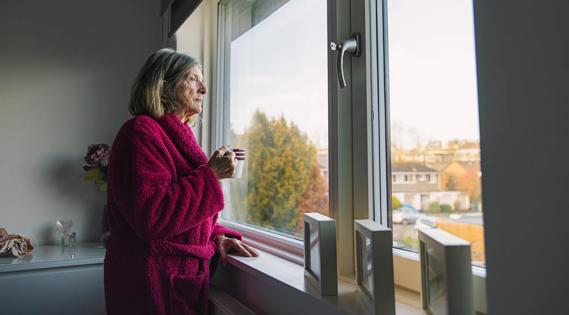Advertisement
New data shows certain groups are more at risk

As some schools reopen in the U.S., there’s been much discussion about the risks of COVID-19 for children. While there’s still a lot we don’t know about the disease and how it affects different people, new research is underway, and medical experts continue to learn more every day.
Advertisement
Cleveland Clinic is a non-profit academic medical center. Advertising on our site helps support our mission. We do not endorse non-Cleveland Clinic products or services. Policy
One thing that is known is that children generally do better with COVID-19 than adults. Most children who contract the coronavirus have mild symptoms or don’t develop any symptoms at all.
A new analysis published in the CDC’s Morbidity and Mortality Weekly Report reaffirms that it’s very uncommon for children to die from COVID-19. As of July 31, less than 1% of people who died from COVID-19 in the U.S. were children or adolescents, according to the new report.
“The data really speaks to the fact that COVID-19 generally has been a much milder disease in children than in adults,” says Camille Sabella, MD, Director of the Center for Pediatric Infectious Diseases, who was not involved in the report.
But this doesn’t mean kids aren’t at any risk. Children can and do get COVID-19 – and they may play a key role in community spread of the disease, too. It’s important for parents and children to stay cautious.
Children of all ages can be infected with the coronavirus. But the new CDC report shows that older children and adolescents are more at risk for developing deadly complications, including multisystem inflammatory syndrome and respiratory failure.
The report analyzed data about the 121 children who died from COVID-19-related illness between February and July. Of them, 70% were between the ages of 10 and 20.
“The youngest children seem to be most protected from this virus,” Dr. Sabella says.
Three out of four children who died from COVID-19 also had at least one underlying medical condition. The most frequently reported medical conditions were asthma, obesity, heart conditions, and neurological and developmental conditions. Children with these conditions should take extra precautions against COVID-19, Dr. Sabella states.
Advertisement
The report also highlighted the fact that racial and ethnic minorities are especially affected by COVID-19. Three out of four children who died from COVID-19 were Hispanic, Black or American Indian/Alaskan Native. A number of social factors likely contribute to this disparity, the report notes, including more crowded living conditions and essential workers among these groups, in addition to challenges with access to healthcare.
Though COVID-19 is generally less severe in children than in adults, medical experts still don’t know exactly why. “There has been some suggestion that it might have to do with receptors that the virus attaches to in the body, but that’s speculative at this point,” Dr. Sabella says. “Nothing has been proven.”
Researchers are also still working to better understand MIS-C, an inflammatory condition that was present in 12% of the children who died from COVID-19.
“This is a new syndrome that we are learning more about,” Dr. Sabella says. “What the long-term complications are, especially involving the heart, remain to be seen.”
Children are resilient — including when it comes to COVID-19. But it’s important to remember that, though the risk is small, they can get very sick. It’s critical to continue to take protective steps such as social distancing, avoiding large gatherings, wearing a mask (if they’re over age 2) and washing their hands frequently.
These precautions are also necessary for children to avoid potentially spreading the virus. Because children who are infected often show mild or no symptoms, some studies suggest they may be especially likely to unknowingly spread it to parents, teachers and others they come in close contact with.
Over the next few months, Dr. Sabella expects to see more cases of COVID-19 in children and adolescents. “Early in the pandemic, we weren’t testing very many children, but now with schools, colleges and daycares back up and running, we’re starting to test many more children than before,” he says. “I’m hopeful that, with the mitigation plans that schools have in place, the mortality and morbidity among these groups will continue to be low.”
If your child shows symptoms of COVID-19 such as fever or cough, don’t delay reaching out to your healthcare provider.
“I would also like to stress that flu season is going to be upon us very soon,” Dr. Sabella adds. “We do have a flu vaccine, and I would really encourage all children 6 months of age and older to get the flu shot. The more than we can do to mitigate flu this season, the better it’s going to be for everybody.”
Advertisement
Learn more about our editorial process.
Advertisement

Studies have shown promising results, but additional research is needed

Infection and inflammation can cause you to lose your voice and have other voice changes until you’re fully healed

A COVID-19 infection can bring on depression or anxiety months after physical symptoms go away

Just like the flu, COVID-19 continues to evolve every year with new and smarter variants

The latest omicron subvariants carry specific mutations that may allow the SARS-CoV-2 virus to be better at evading immune protection

You can work out with mild COVID-19, but not in a gym, and listen to your body and don’t overdo it

Most people can return to work and regular life when they’re symptom-free for 24 hours

Lysol Disinfecting Wipes are just one of more than 500 products approved by the EPA for protection against the SARS-CoV-2 virus that causes COVID-19

If you’re feeling short of breath, sleep can be tough — propping yourself up or sleeping on your side may help

If you fear the unknown or find yourself needing reassurance often, you may identify with this attachment style

If you’re looking to boost your gut health, it’s better to get fiber from whole foods